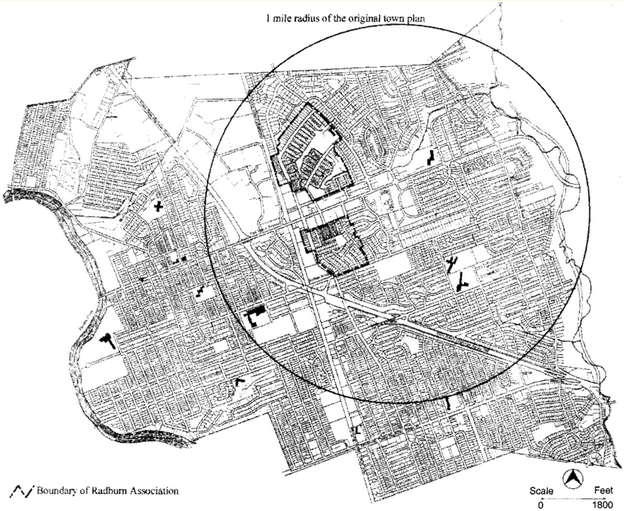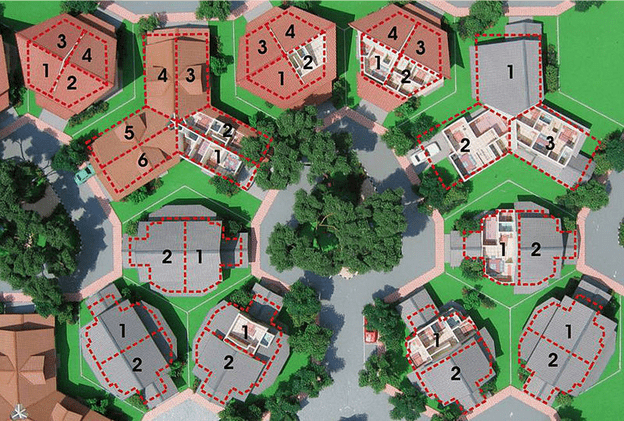The way we have been designing our streets and neighborhoods have actually made our streets more dangerous.
Let’s go back a bit: Starting in the 1930s, suburban design in the United States has been heavily influenced by the Radburn Idea, which originates from a planned suburban community with the same name in North Jersey. Radburn popularized the cul-de-sac, which separated pedestrians and vehicles into what urban planners call “loops and lollipops.”

For decades, the cul-de-sac model was incorporated into suburban design. But as Michael Southworth and Eran Ben-Joseph point out in their paper “Reconsidering the Cul-De-Sac,” there are issues with this design pattern, including a lack of connectedness, a forcing of traffic onto arterial roads causing gridlock, and inefficient connections to other destinations.
To leave any one area requires backtracking to other areas.

For decades, it was commonly thought that these cul-de-sac neighborhoods were safer than the traditional grid design. But as John Rees pointed out recently, “in so-called ‘lollipop neighborhoods’ – developments having only one street in and out – there can be blocked streets from weather events that either totally prevent, or delay firefighters and EMTs from reaching neighborhoods.”
Fortunately, the Town of Chapel Hill has recently announced the plan to implement a connector roads policy for new development projects. (The project does not anticipate constructing new road connections outside of redevelopment projects.) This is great news for Chapel Hill, as connected roads and complete streets are safer for pedestrians, bicyclists and drivers. The in process Connector Roads policy will help to enable the Vision Zero plans for the Town as well.
I live in Carrboro, which has had a Connector Roads policy in place since 1986. But this policy has not been implemented consistently and now many neighborhoods are separated from one another. Walkers and bikers have to go out of their way to reach other cul-de-sacs.
The value of connector roads – which fuse the cul-de-sacs together – are numerous and can help provide a middle ground: they still allow cul-de-sacs to exist when no other alternative exists but help in the following ways:
Connector roads help with traffic
Traffic is bad where there are lots of drivers, they have to travel long distances to meet their basic needs, and they are funneled onto a small number of larger roads to do so. This is basically how all suburbs are designed today.
Connected roads, in contrast, diffuse this traffic, by having numerous smaller and slower connected roads you avoid choke points and build in resilience to the road network that will help disperse traffic more efficiently when problems (or construction) arise. (Looking at you Estes Dr., and the nightmare 2 mile detour!)
Connector roads make driving safer
By funneling nearly all of the traffic from various neighborhoods onto a limited number of larger and faster roads, the overall safety within a town decreases. In fact, one study has shown fatal crashes were more than 270% higher in the cul-de-sac communities than the ones built on grids.
Connector roads build community
The neighborhoods that are being designed and developed in Chapel Hill and Carrboro today are starkly different from the ones from even a decade ago. These homes are smaller, with smaller lot sizes with the intent of making homes more affordable for a more diverse population. By limiting the connectivity of these more diverse neighborhoods, we are limiting the opportunities for social mixing. If people can only enter a neighborhood from one side, they are less likely to have interactions with people from other neighborhoods. This may also increase the cost of living in a neighborhood with unequal access to an economic or job center of a town.
Connector roads decrease time in cars
Disconnected roads lead to increased travel time in cars, which increases CO2 emissions and fuel consumption. Constructing huge cul-de-sacs at the end of each road also increases the consumption of raw materials. This road design also decreases the available green space for many neighborhoods while increasing water run-off.
In future posts, I plan to look more at these specific challenges and ways in which we need to think about our roads now to benefit generations to come.
